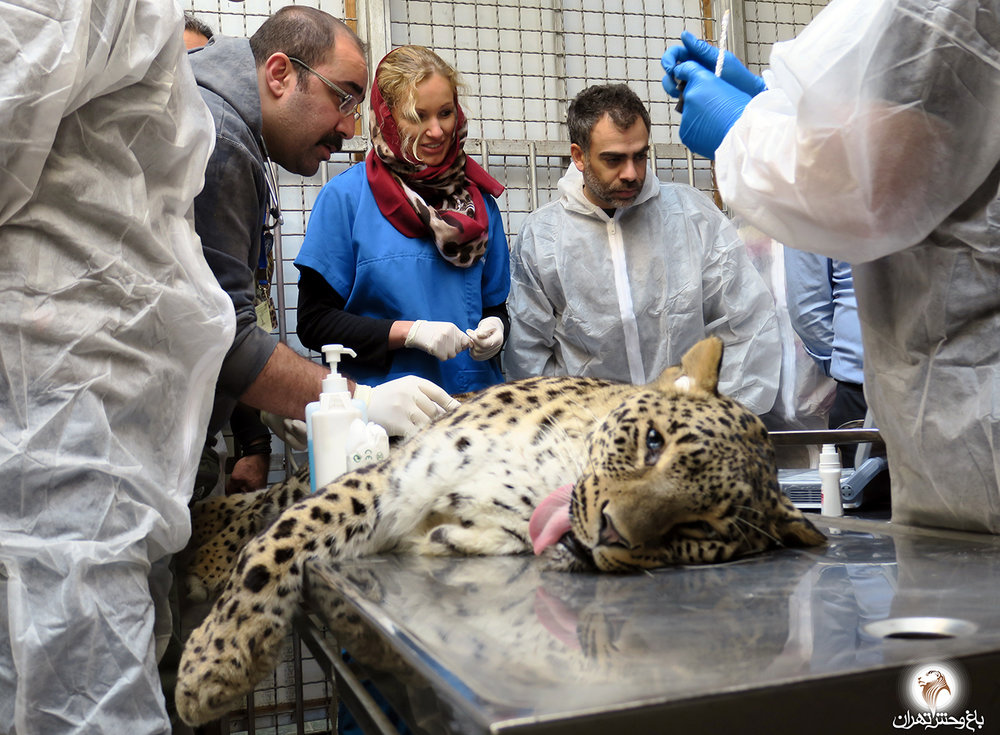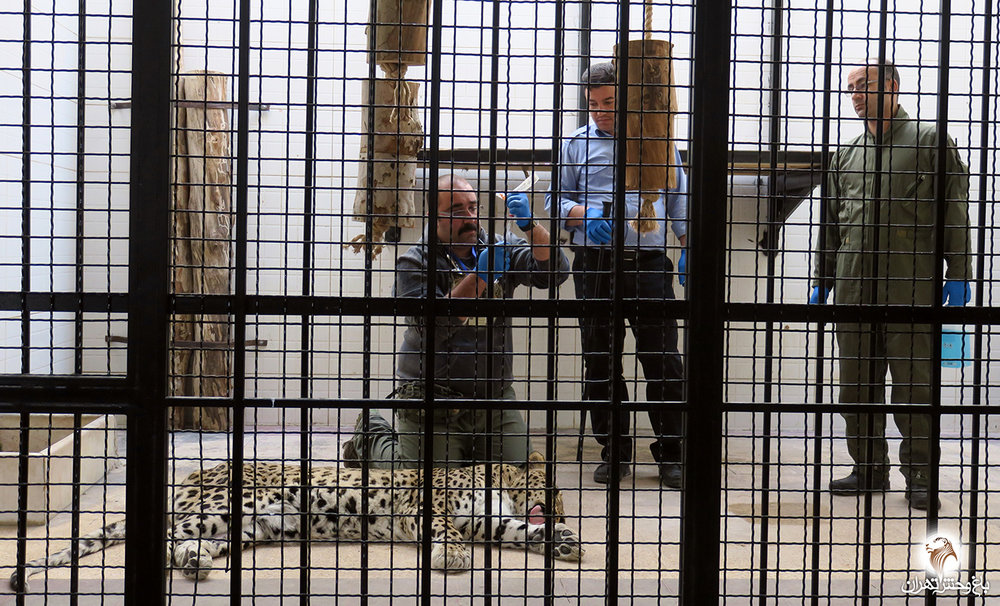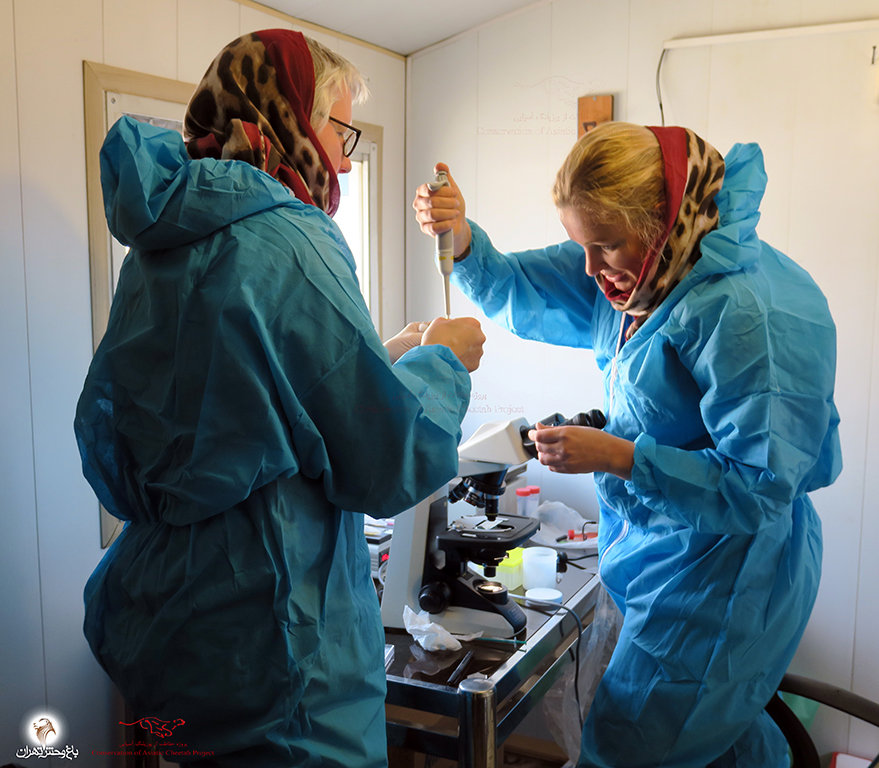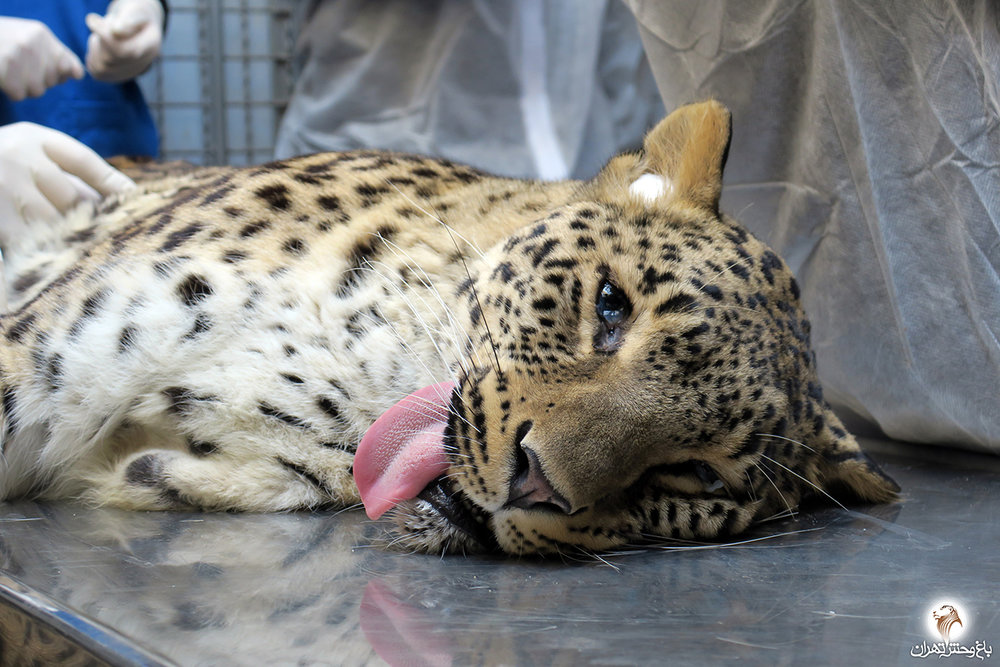Wildlife conservation breeding in Iran

Assisted reproductive technologies (A.R.T.) for endangered species such as cheetahs and leopards can be viewed as a tool that can increase reproductive output. Knowing specific factors that can influence fertility and either providing conditions that reflect those that are naturally found, or attempting to mimic them artificially can enhance natural reproduction.
However, for conservation breeding and the implementation of A.R.T. scientists have to know more about reproduction physiology. Artificial insemination in large Felidae can be an important tool. Most of non-domestic felids are endangered because of isolation, habitat destruction, inbreeding and so on.
Research into semen collection methods and cryopreservation of sperm needs scientific collaboration and that’s why vets, conservationists, and also geneticists work together.
Kija (literary meaning daughter) and Rika (literary meaning son) are the two Persian leopards living in captivity in Tehran zoo. Kija is not young enough and despite years of living together the two have not mated naturally for unknown reasons. So recently a team comprising of Iranian and foreign researchers and vets have succeeded in collecting semen from the male leopard, preserving it and waiting for the female to be prepared for future pregnancy.

The Tehran Times conducted an interview with Dr. Imke Lueders, one of the vets assisted in collecting semen from Rika during her recent trip to Iran.
Dr. Lueders is a renowned wildlife veterinarian who works on setting up and enhancing breeding programs for endangered species. Her focus is on research, conservation and advancing assisted reproduction technologies for mammal species in various countries.
Below is the text of the interview:
Q: When did becoming a wildlife vet first spark your interest?
A: I was always interested in wildlife but I didn’t think about the possibility of becoming a wildlife vet. During my internships, I had the opportunity to go to Africa and a zoo in the UK and those studies made me eager to know more. The four weeks I spent as a vet student at the zoo was in fact the reason wanting to become specialized in zoo animals and wildlife. Being in contact with these special animals directly fascinated me and I decided to pursue this career. I graduated about 10 years ago from Berlin University, and had the chance to do my PhD in elephant reproduction at the Leibniz-Institut für Zoo- und Wildtierforschung (IZW) and after that I was working in a zoo for a short period. Then decided to work on reproduction methods of endangered animal species, and that was a big step in my life.

Q: But why did you choose conservation?
A: Because I do want to contribute to help species to survive. It is quite sad that we lose so many amazing animals momentarily. I always think about the human being: we just think about raising ourselves nor anything else but there are so many other creatures on our planet. The different types of life have always fascinated me and I think it is quite bad and also shocking that our wildlife heritage is disappearing and unfortunately we are one of the main reasons for this extinction. I feel that everyone has the duty to do something for our environment, our nature. I personally want to avoid further species loss.
Q: What is the brightest spot in your professional life?
A: Seeing the birth of an elephant baby for the first time was a memorable moment. Asian elephants are highly endangered and seeing a new one being born was a quite special experience of course. During my studies, I had the chance to monitor an elephant pregnancy (22 months) by ultrasound, and I saw the embryo developing into a fetus and finally the birth of the baby. That was in Canada in 2009, but I still remember those fantastic moments. And also last year I had the chance to see the most endangered rhino species: the Sumatran rhino at the Sumatran Rhino Sanctuary (SRS) located in the Way Kambas National Park in southern Sumatra. A breeding program was started here, because of severe habitat loss. Seeing those cute little rhinos, only 400 to 600 kg, was great. Unfortunately less than 50 Sumatran rhinos are left on the planet and their future is uncertain.

Q: Here in Tehran you did two important things, one for Persian leopards in Tehran Zoo and more importantly preparing the first gene bank of Asiatic Cheetah in Asiatic Cheetah Research and Husbandry Headquarter of Pardisan Park. What was your assessment about these two works you did here in Tehran?
A: In European zoos, we have already a breeding program for Persian leopards. For a healthy population, a broad genetic diversity is needed. We do not want to transport entire animals between different countries, so the wisest thing is to preserve sperm because maybe there would be chance of producing offspring in the future by artificial insemination. By using artificial insemination with sperm from new founders, we can increase genetic diversity in captive populations and this is our big chance to conserve some of the most endangered animals such as Persian leopards. But in the case of Asiatic cheetah, we just could collect the semen for cryopreservation (deep freezing). In the case of Persian leopard and the Asiatic cheetah in Iran, the habitat is in danger due to human encroachment (dogs, roads, diseases from domestic animals, hunting by humans). Setting up captive programs and the biobanks are necessary to save at least some animals and genetics. We are trying to create biobanks in biodiversity hot spots to store DNA and sperm for future generations and that’s why we are working in different countries.
There are also different methods to preserve the sperm and the tissue and especially in my field, I am interested in the application of assisted reproduction. It means endangered species who cannot breed themselves, we can help by artificial insemination or other techniques. Many techniques are developed and used for domestic animals but not wild animals, we are just in the beginning. Still a lot of researches needs to be done. In the European Zoo community we are working on the ability of captive breeding of endangered species so it is quite important to know their behavior and their needs. But also we have to understand the physiology of those species. We had a successful artificial insemination already and two Persian leopard cubs were born in Germany and that’s why we think the opportunity of working with an Iranian zoo is important.

Q: Does it mean you have hope to succeed in A.R.T. in Persian leopard in the near future?
A: Yes, definitely. I must say honestly that the semen of the old Persian leopard at Tehran zoo was not good enough in quality for artificial insemination. However, we still froze the sample of him to preserve his DNA and for other future applications. I am quite optimistic for the whole process.
Q: And what was the most memorable experience in your journey to Iran?
A: It is difficult to say because we had such a short time and did see so many things! It was amazing to work with the colleagues here and of course, very special for me to see the Asiatic cheetah for the first time in my life. With less than 30 animals left in Iran, this is the most endangered cat species in the world. I hope Iran is able to protect this critically endangered animal!

Leave a Comment